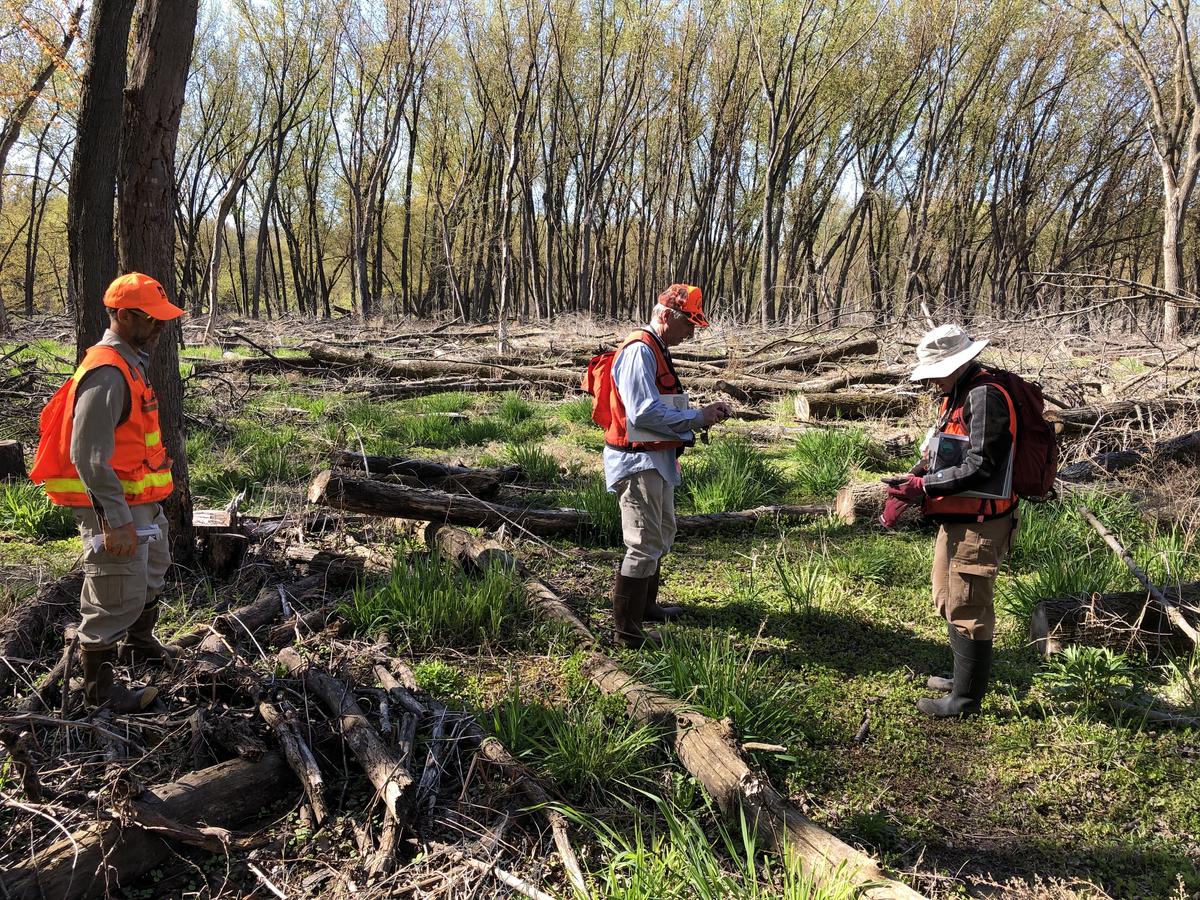Overview
This case study is a review of early results of an ongoing project to regenerate a mature bottomland hardwood stand in the Mississippi River floodplain system in southeastern Minnesota. A group selection (gap) harvest and artificial and natural regeneration have been accomplished so far. The site will be monitored, with additional harvests and artificial regeneration to take place over time as regeneration is established in existing harvest gaps.
The native plant community silvicultural strategies on this site:
- Large gap: maintain a stand as would selective windthrow involving patches of similarly sized trees by removal of canopy trees in large gaps.
- Small gap: maintain a stand as would natural senescence, disease, beaver cutting, or physical battering to create small-gap habitat.
Much of the lowland hardwood forest acreage in this region is reaching biological maturity and is in need of active management to maintain forested condition. Yet it has proven very challenging to consistently regenerate lowland hardwood stands in the region.
Two major challenges to successful regeneration of this area have been identified:
- Regular flooding inundation during the growing season most years. While there is excellent natural establishment of desirable seedlings (largely silver maple) in the spring and early summer of most years, they have been killed by almost annual growing season flooding inundation of a month or more.
- Heavy reed canarygrass competition in some of the more open areas. Thick patches of reed canarygrass provide extreme competition for moisture, light, and nutrients, choking out most other vegetation.
In addition to collecting tree seedling regeneration data following harvest, we also collected information on reed canarygrass competition to see if we could learn anything about its impacts on tree regeneration for this site.
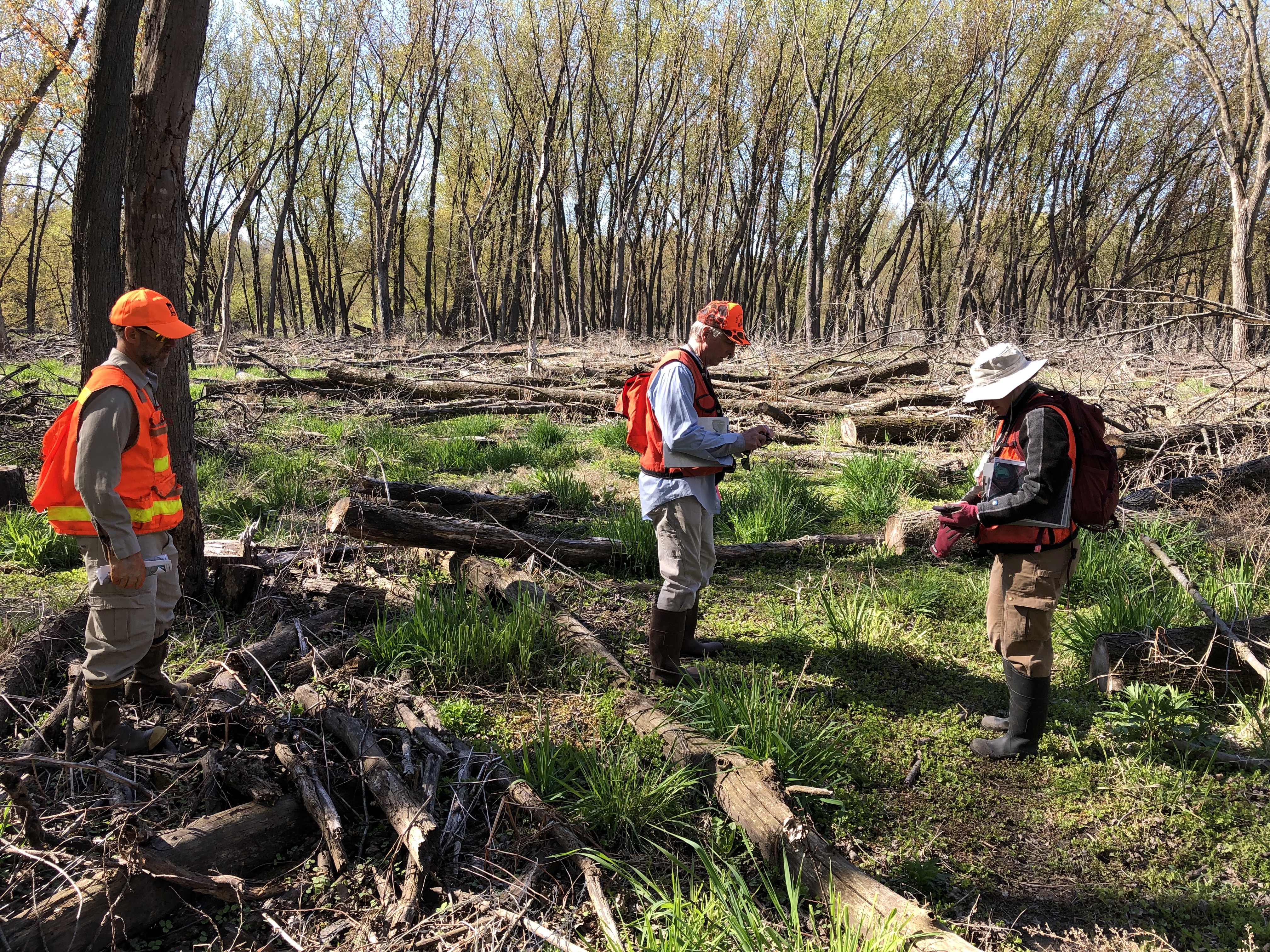
Figure 1: Forestry staff assess regeneration in a gap harvest area, spring 2021.
Silviculture Objective(s)
- Maintain floodplain forest for habitat, ecological services, and economic reasons.
- Regenerate the mature portion of the stand to a young stand of similar composition.
- Improve the health and vigor of the younger portion of the stand.
- Improve timber quality and value.
Pre-treatment stand description and condition
Bottomland hardwoods
Stand establishment and management history:
The study site is located in the floodplain of the Cannon, Mississippi and Vermillion Rivers. The site had a history of use as pasture and woodlot prior to the state obtaining the property from a private landowner in the early 1980s.
Pre-treatment species composition:
The pre-harvest condition in 2018 was mature floodplain forest of varying basal area densities and crown closure. The site also had non-forested sections with annual floodplain vegetative cover, including sedges and reed canarygrass, as well as some marshy inclusions.
Silver maple was by far the dominant overstory species in 2018. There were also small components of ash, cottonwood, American elm, black willow, boxelder, and although they were not appraised for sale, a small amount of black walnut and hackberry.
Table 1: Appraised sawtimber volume by species in 2018 on the 15.3 acre site.
| Species | Volume (MBF) |
| Silver Maple | 104.6 |
| Ash | 17.8 |
| Cottonwood | 2.9 |
| American Elm | 1.9 |
| Willow | 1.2 |
| Boxelder | 0.9 |
| Black Walnut | 0.0 |
| Hackberry | 0.0 |
| Total | 129.3 |
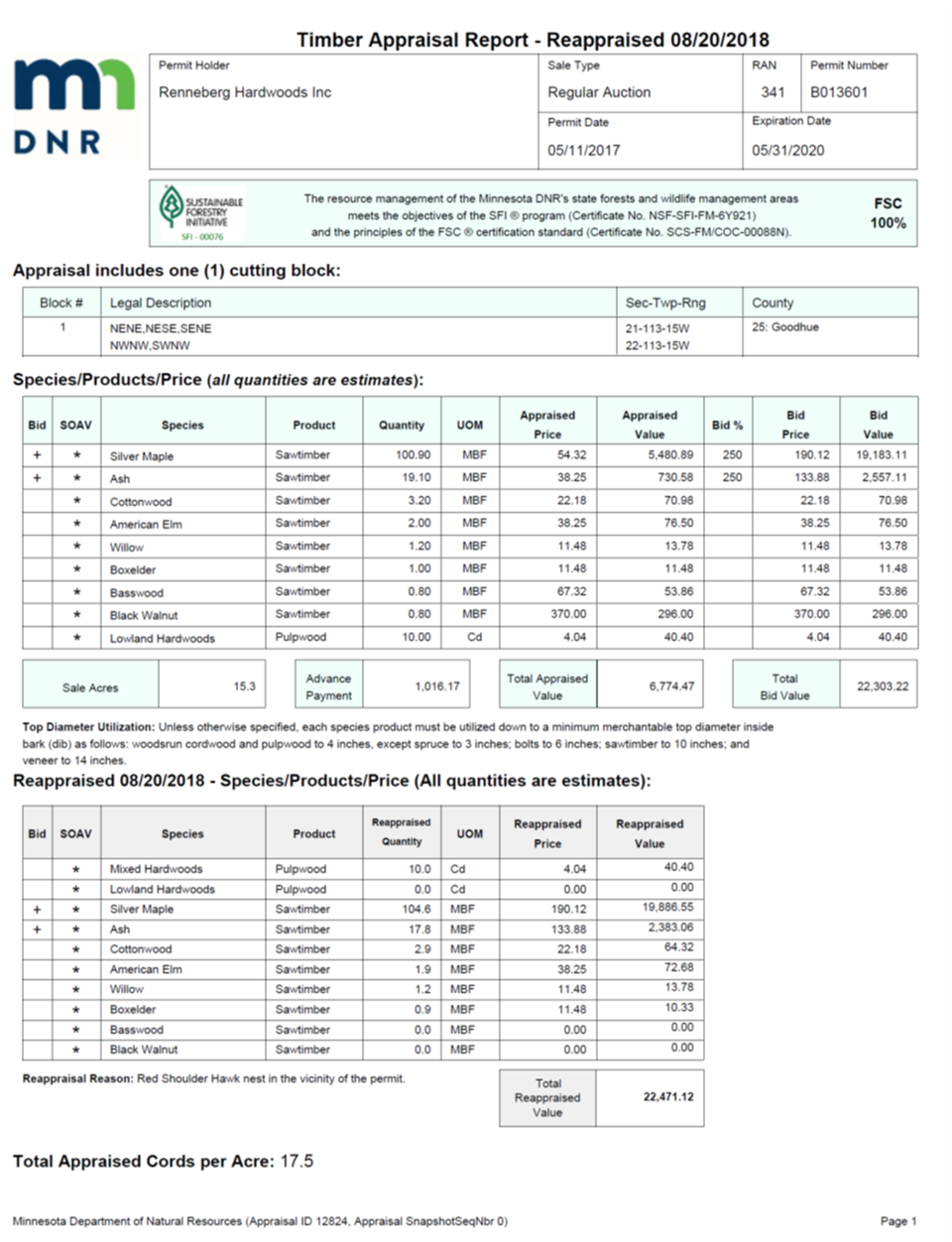
Figure 6: 2017 timber appraisal report.
Pre-treatment forest health issues:
Emerald ash borer. Emerald ash borer damage is found throughout the floodplain forests in the region. Ash is not a preferred species for regenerating the site.
Dutch elm disease. Elm is easily established on these types of sites but is killed by Dutch elm disease, usually before it reaches 8 inches DBH.
Landowner objectives/situation:
While specific objectives vary from parcel to parcel, lands under the administration of DNR-Forestry are managed in alignment with Section Forest Resource Management Plans (SFRMP) to ensure that state forest management activities meet statewide goals for ecological protection, wildlife habitat, timber production, and cultural/recreational values. The DNR assembles teams from the Divisions of Forestry, Fish & Wildlife, and Ecological & Water Resources who work with partners and the public to develop SFRMPs.
Minnesota DNR’s specific objectives for this site and surrounding area are excerpted from the document “Blufflands/Rochester Plateau Subsection Forest Resource Management Planning ADDENDUM: Vermillion Bottoms and Lower Cannon River Area High Biodiversity Area Management Plan – December 2002”:
Maintain and regenerate native plant communities and the plant and animal species that reside in the area. The intent is to have timber age classes spatially distributed to provide habitat both now and in the future for adapted flora and fauna to survive in this area. Processes that mimic the disturbances that helped to establish and maintain these communities will be used to achieve this goal.
The goals of biodiversity protection, timber management, recreation, and wildlife management will all be included in management decisions to achieve this goal. As new research or management techniques become available, they may be incorporated into management practices prescribed in this plan to achieve the long-range goals.
Silviculture Prescription
The following series of treatments were implemented.
| Treatment and date | Description | Acres Treated |
| Silvicultural assessment - 2015 and 2016 | Assessment to determine silvicultural strategies to maintain, improve and regenerate the stand | 63 |
| Underplanting - Spring 2017 | Pre-harvest underplant a diverse mix of species that are suited to the site with available planting stock, to supplement expected natural regeneration. Underplant in portions of the stand where harvest gaps were planned, and where reed canarygrass was least prevalent or absent. Bareroot stock of the following species and number/acre were planned:
No site preparation was done due to lack of reed canarygrass competition in planted areas. | 14 |
| Group selection (gap) harvest - Winter 2019-2020 | Open the forest floor to sunlight for natural regeneration and release of underplanted seedlings while minimizing habitat and shoreline zone impacts. 8 gaps of 0.9 to 3 acres in size prescribed and scattered throughout the site with all trees harvested within each gap. Ash salvage harvest was given high priority, but not all ash were harvested.
| 14 |
What actually happened during the treatment
The 2017 seedling underplanting proceeded largely as planned, but the State Forest Nursery substituted black cherry for river birch due to lack of river birch seedlings. Unfortunately, a prolonged flood water inundation period during the 2019 growing season killed all the seedlings.
The job was all hand-felled with chainsaw. The skidding was done with a small old Timberjack cable skidder. The logging operation's use of small, light-weight equipment to fell and skid trees during frozen conditions meant that the harvest was completed with virtually no rutting or site damage.
Post-treatment assessment
The regeneration goal within the gaps is to establish an adequate amount of “free-to-grow” desirable regeneration. Free-to-grow can be defined as regeneration having reached a size and healthy condition where it can recruit to larger size classes without silvicultural assistance. For many species the terminal bud must be above browse height. After that is achieved, the group selection prescription can be repeated over time, expanding the gaps during subsequent harvests until the entire stand is regenerated. Other regeneration systems to consider are seed tree or shelterwood. For floodplain forest sites, we do not have an exact size or number of seedlings per acre to shoot for, but we want to see adequate numbers of desirable tree stems over 3 feet in height, without overtopping and competing vegetation. NOTE: We did not take any data plots in the unharvested portion of the stand since it was not a focus of the study.
Harvested gaps
In spring 2021 we completed 28 data plots in gap areas to assess the regeneration density and frequency of tree seedings and three of the potentially most significant types of competing ground vegetation (reed canarygrass, nettle, and creeping jenny). Figure 2 shows plot locations.
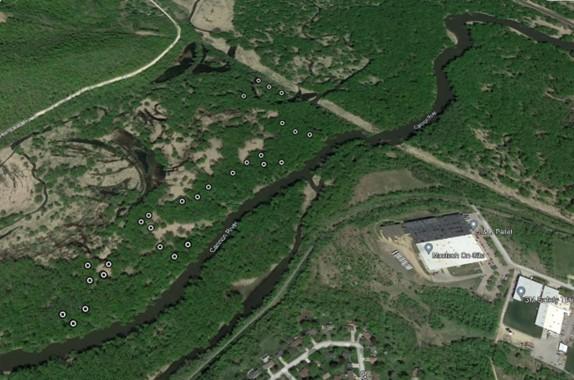
Figure 2: plot locations.
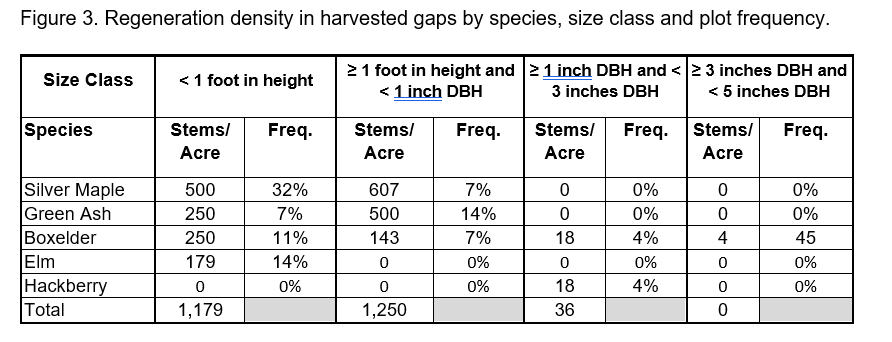
Figure 3: Regeneration density in harvested gaps by species, size class and plot frequency

Figure 4: Reed canarygrass and nettle ground cover percentage and plot frequency in harvested gaps.
One-plus growing seasons after the gap harvest and planting treatment there is almost no regeneration in the harvested gaps that is “free-to-grow”. We did not yet expect to see much (if any) free-to-grow regeneration this soon, but we would have hoped for larger numbers of seedlings, and of larger size, but it seems that virtually none of the planted (or already-established natural) seedlings survived major and protracted 2019 growing season flooding. Nearly all regeneration present in spring 2021 must have been natural regeneration established in 2020.
Two take-aways from the post treatment assessment are:
1) There are modest numbers of silver maple regenerants under a foot tall in 32% of the gap areas. This is common in open areas of FFs68 native plant communities.
2) Only 7% of the gap area has silver maple seedings over a foot tall. Most of these are natural origin seedlings less than 2 feet tall, along with very few stump sprouts greater than 3 feet tall.
For perspective on height and growth, we note that in ideal growing conditions of full sunlight and no competing vegetation in a plantation, 5-year-old silver maple in southern Ontario averaged 12.5 ft. in height after five growing seasons. With no site preparation, the average height of trees of the same age was only 1.6 ft. (US Department of Agriculture, Forest Service, Agriculture Handbook 654,1990).
Regeneration of other desirable species included very small amounts of hackberry. Although none appeared on our plots, we also observed a few cottonwood seedlings.
Herbaceous competition and impacts on silver maple regeneration
Reed canarygrass
We found low (20% of ground cover or less) reed canarygrass levels on 57% of our plots, with high levels (50% of ground cover or more) on 36% of our plots suggesting that it is serious competitor for seedling establishment and growth for parts of the harvest gaps area, but not all of it (Figure 4). It is also notable that, like 3 other FFs68 native plant community case studies with documented frequency and percent cover, post-harvest spread appears to be very minimal so far.
Nettle
We found nettle to be over 50% of ground cover on only 7% of our plots suggesting that nettle competition has not been a limiting factor on silver maple establishment in most of the gap area (Figure 4).
Probable cause of regeneration inadequacy so far:
The frequency and duration of floodwaters along the Mississippi and Cannon River bottoms is a significant reality for land managers. While larger species like silver maple can withstand considerable growing season flooding, seedlings that are not tall enough to remain above the flood waters will likely die during prolonged growing season inundation periods. In 2019 small seedlings died as the site was under water for much of the growing season (Figure 5).
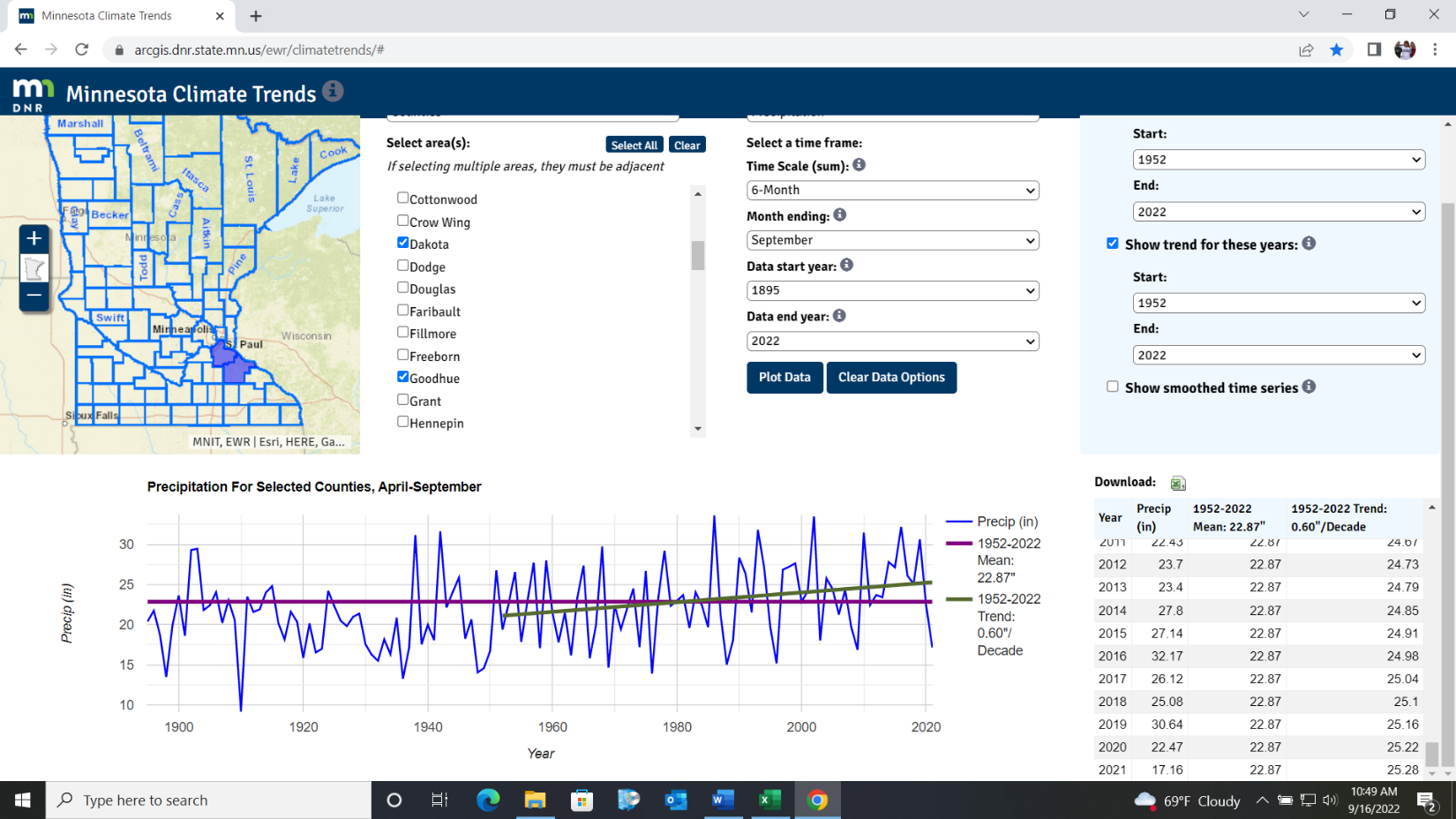
Figure 5: MN Climate Trends: precipitation data for Goodhue and Dakota counties
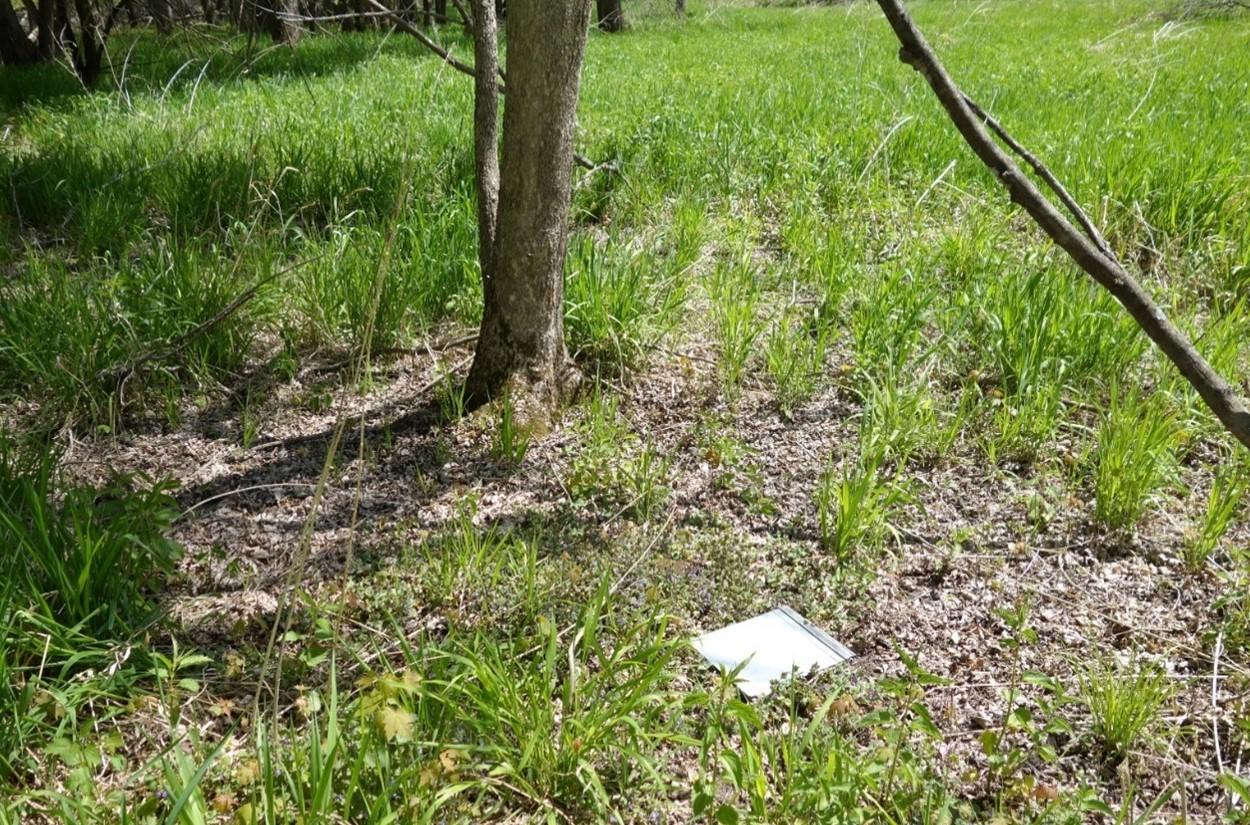
Figure 7: Silver maple seedlings present in the partial shade of single trees or from the adjacent forest.
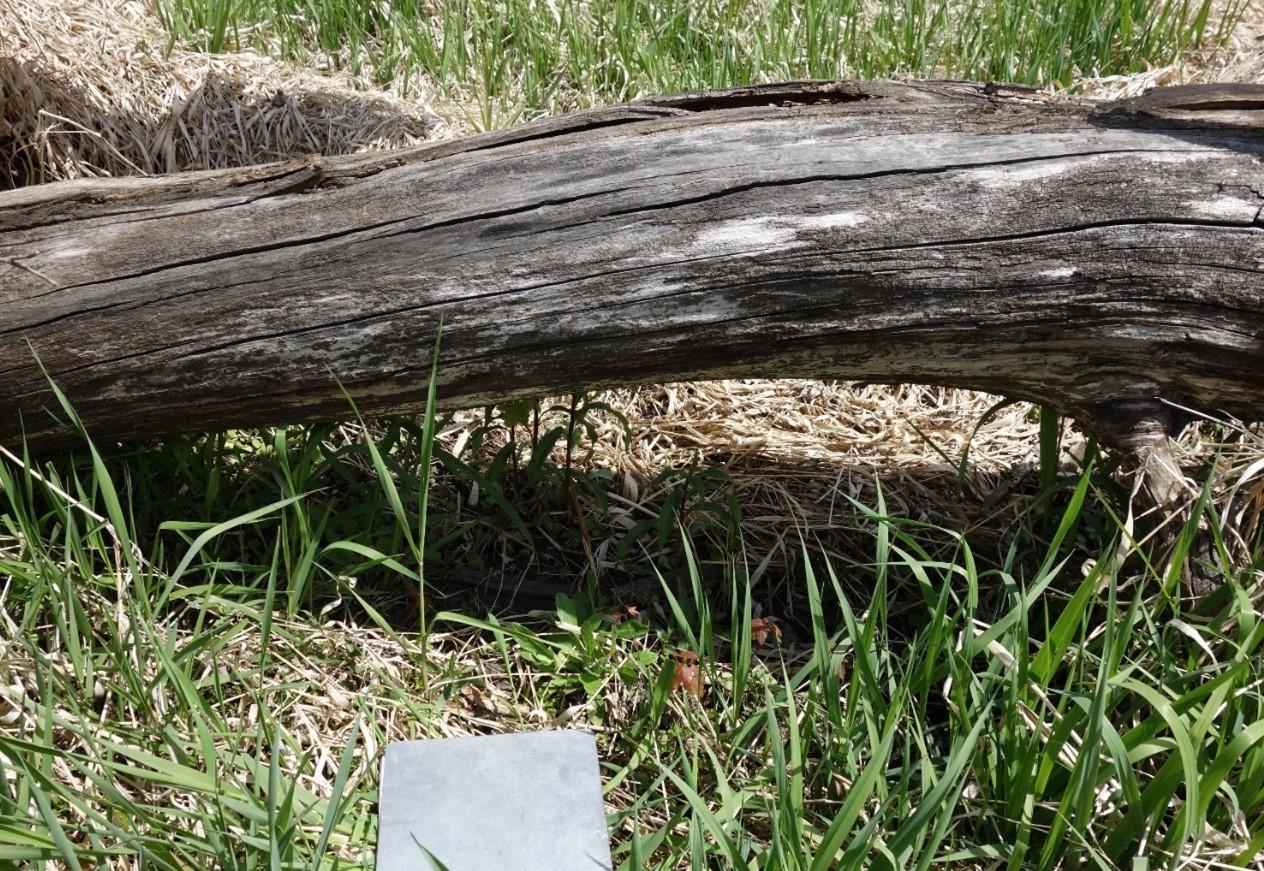
Figure 8: Silver maple seedlings present in the partial shade of coarse woody debris.
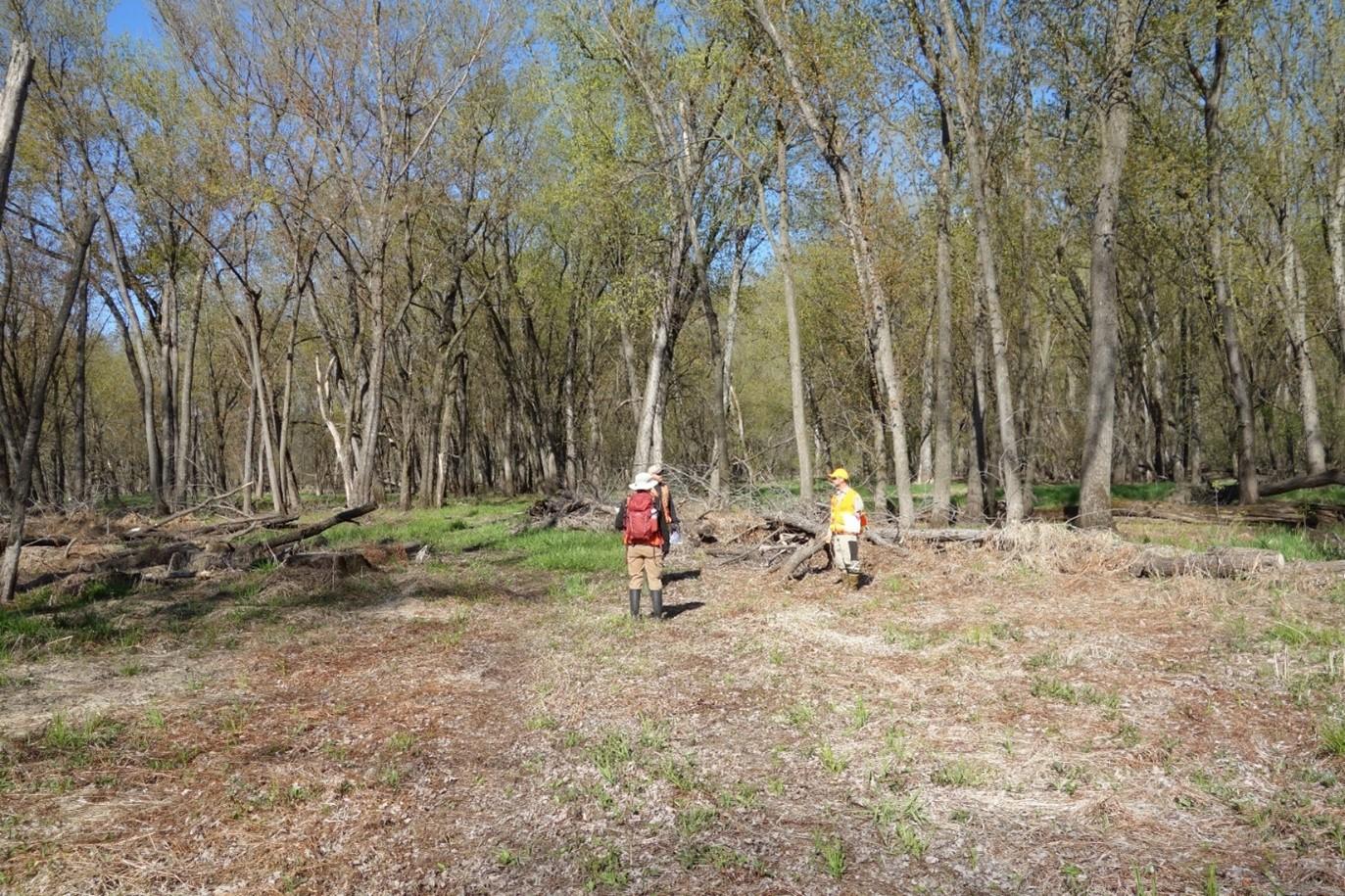
Figure 9: Field staff assessing regeneration in a harvest patch, spring 2021.
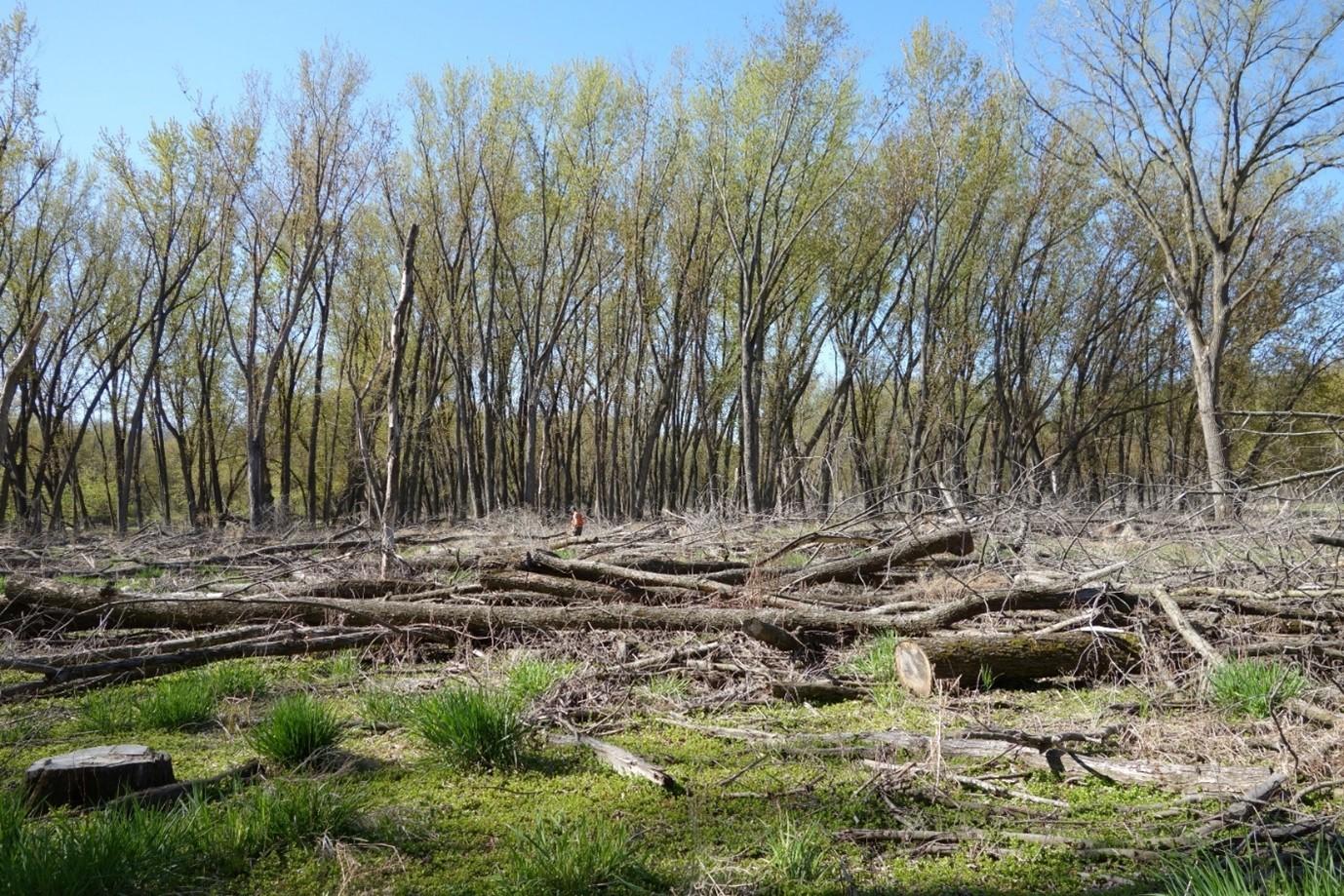
Figure 10: Gap harvest with abundant coarse woody debris, spring 2021.
Unharvested portion of stand
Since it was not a focus of the study, we did not take any data plots in the unharvested portion of the stand. We would describe it as representative of an 85 year old FFs68 forest.
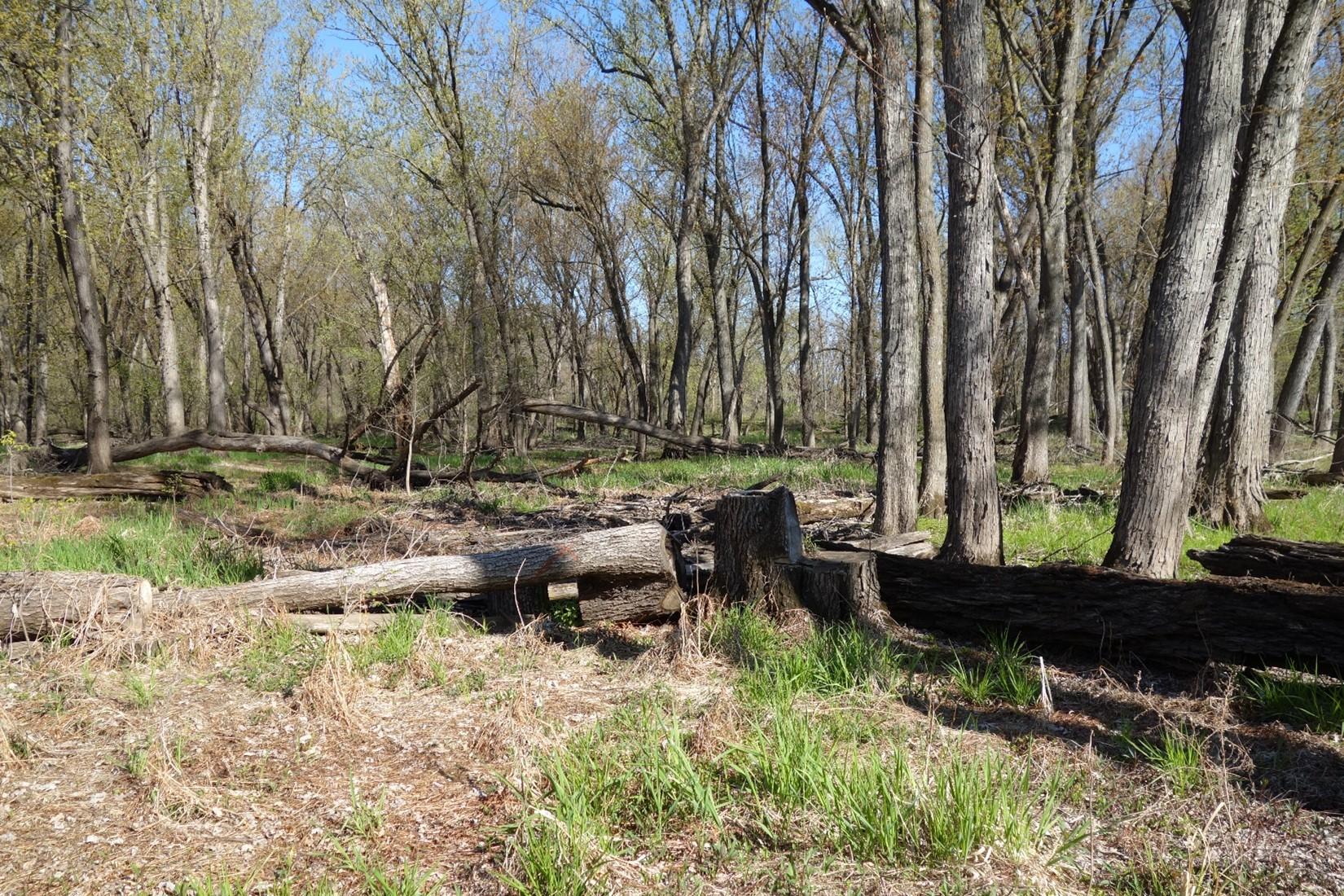
Figure 11: the view from the edge of a harvest patch looking into the adjacent forested area.
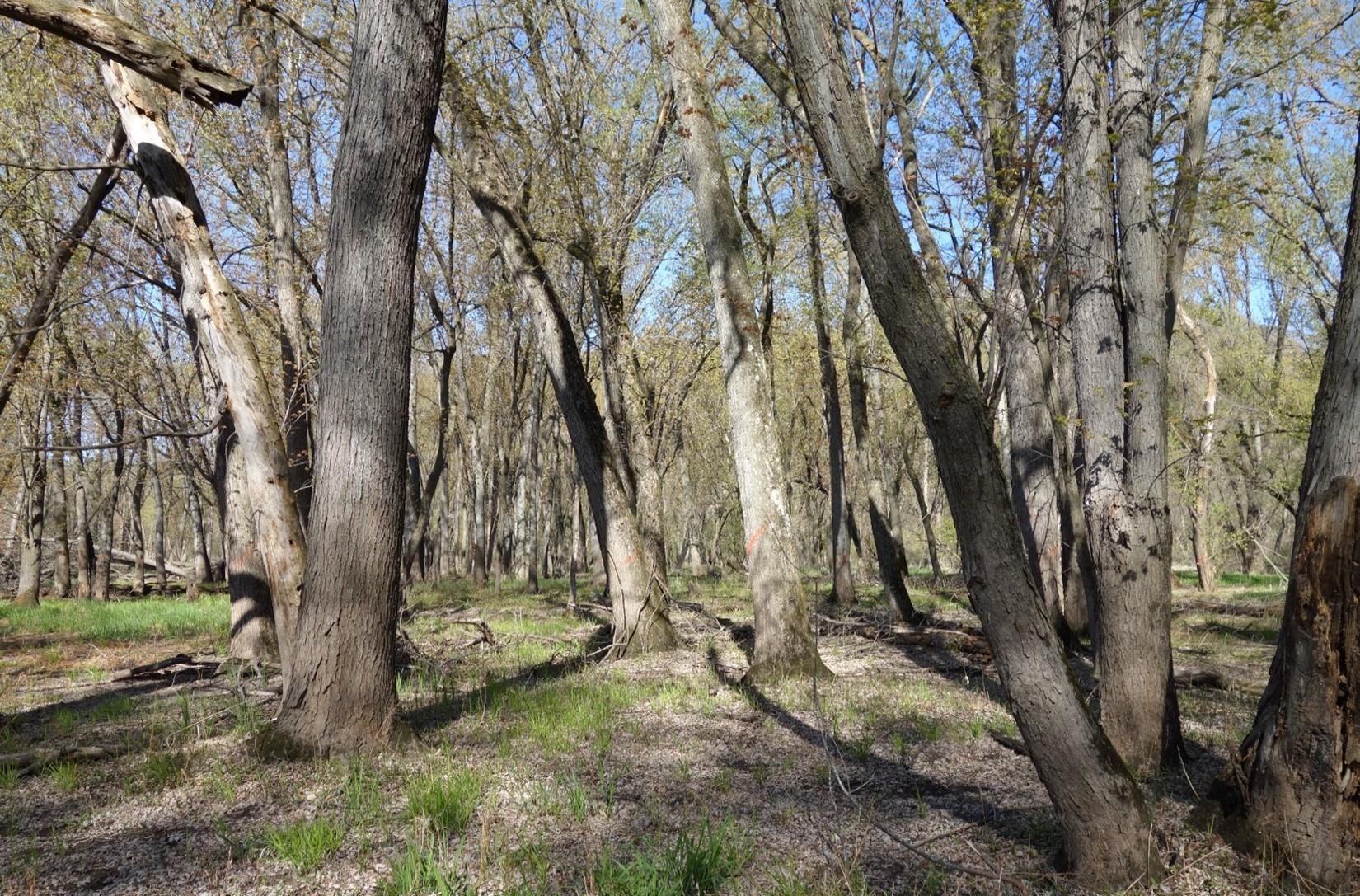
Figure 12: Conditions in an untreated portion of the stand, spring 2021.
Plans for future treatments
Tree Planting
When funding becomes available, we plan to plant 8.5 total acres in 5 harvested gaps where reed canarygrass is most prevalent. We plan to use large, Root Production Method (RPM) containerized stock planted at a density of 250 trees/acre. Trees will be shovel-planted and staked with wood dowels to hold the tree and root ball in place. Vole guard tubes will be installed on stems to protect them from being girdled. Species will include silver maple, cottonwood, swamp white oak and river birch, depending on availability.
Harvest
As regeneration becomes established, we plan to schedule another regeneration harvest. This will be necessary to open the forest floor to adequate sunlight for shade-intolerant seedlings to become established and recruit to larger sizes. We see 3 harvest strategies as potential options:
- Seed tree
- Additional gaps on approximately another third of the site
- Shelterwood
We will make a final decision on harvest strategy during our field silvicultural assessment prior to a sale appraisal.
Costs and economic considerations
Costs
2017 Tree planting: $8,985.00 (2017 dollars)
Revenue
Timber sale revenue $ 22,303.22 (2018 dollars)
Other notes
Additional tree planting took place in 2022.
In the spring of 2022, 6.6 acres in 3 of the gaps where reed canarygrass competition was lowest were planted with large bareroot stock. We mention the 2022 planting in the “Other notes” section rather than in the “Silvicultural prescription” section because the data summary we present in the “Post-treatment assessment” occurred in May of 2021. Therefore, the seedlings from the 2022 planting are not represented in our assessment data.
Table 2: 2022 harvest gap planted species.
| Species | Nursery | Seedling Size | Number Planted |
| Silver maple | MN State Forest Nursery | 1-0 stock | 2000 |
| Swamp white oak | MN State Forest Nursery | 1-0 stock | 1000 |
| River birch | Iowa DNR nursery | Large | 700 |
| Hackberry | Iowa DNR nursery | Large | 70 |
The prescription called for planting cottonwood bareroot seedlings as well but we could not find any of stock available at the time of planting.
Contract specifications required the vendor to plant these trees with a shovel due to the large river birch and hackberry stock which is much larger than our typical 1-0 stock.
Future updates to this study will include an assessment of these seedlings, and also any natural seedlings that have established since May 2021.
We had review and editing help.
We gratefully acknowledge the valuable review and editing assistance of MNDNR’s State Land Programs Supervisor Paul Dubuque.
This case study was developed with support from the United States Department of Agriculture's National Institute for Food and Agriculture, Renewable Resources Extension Act. Project #2021-46401-35956, principal investigator Eli Sagor, University of Minnesota.
Climate adaptation considerations
Impacts of a wetter climate.
The wetter climate of the last 35 years has resulted in a more challenging environment for regenerating Mississippi and Cannon River floodplain forests. Floodwater inundation in this area during the growing season has, on average, been greater and more frequent than in the decades preceding the 1980s. The year-round precipitation and growing season precipitation average is about 3 inches higher in the last 35 years than in the preceding 35 years. This is not only true for Goodhue County, but collectively for all Minnesota’s Mississippi River Counties in the region (Minnesota Climate Trends, 2022).
Summary / lessons learned / additional thoughts
Development of consistent regeneration methods for lowland hardwood stands in the Mississippi River floodplain is a significant challenge in need of continued attention. We plan to continue monitoring this site into the future and update this case study periodically
The major question for bottomland hardwoods regeneration in the Mississippi River needs further study. We would like to continue examining why silver maple regeneration has occurred in some places, but not in many other, seemingly similar places. We will continue to examine impacts of harvest and regeneration methods, soils, elevation and reed canary grass competition in this and other ongoing case study locations.
Reed canary grass competition has spread very little in the harvest gaps
We were somewhat surprised to find that as of May 2021 there has been little, if any, reed canarygrass spread since the 2019 harvest.
Results from this and 3 other case studies in the FFs68 native plant community indicate that reed canarygrass spread into areas not already infested at high levels has not been a major impediment to tree establishment. This observation is in contrast to areas within this site and other sites where infestation levels are high prior to timber harvest.
In conclusion, reed canarygrass is a major impediment to silver maple regeneration in places where it is already established on this, and other FFs68 sites. However, in places not already infested, it appears that reed canarygrass spread after harvest may be low or gradual, and should present less challenges to tree establishment and recruitment.
Elevation impacts on regeneration
We used MN DNR Lidar data to determine if we could learn anything useful about whether regeneration success might be related to changes in elevation (Figure 13). Not surprisingly, we can say elevation clearly has an impact on the species composition of the existing vegetation. For example, we see a few black walnut trees and more hackberry nearer the river. The elevation here is a bit higher, and the area is probably better-drained due to proximity to the river.
However, we do not think we have enough regeneration yet established on this site to draw conclusions on how elevation on the rest of the site might impact regeneration. We will continue to assess this in the future as regeneration becomes more established.

Figure 13: Lidar map showing 2019 gap harvest areas, denoted with the cross-hatched pattern.
Patience and persistence are required to regenerate Southern Floodplain Forest sites
Based on our findings here and with several other case study sites in the region, we suggest that patience and persistence are critical for successful regeneration in the Mississippi River bottomland hardwoods system. Plan on frequent regeneration checks and adaptive management efforts until trees reach the “free to grow” stage.
We think the biggest challenge by far is in getting young seedlings tall enough to withstand growing season flooding. Regeneration efforts must be targeted and persistent to take advantage of two or more consecutive years without major summer flooding inundation to ensure seedlings grow tall enough to withstand future summer wet periods. Unfortunately, we can’t know ahead of time when those consecutive normal or dryer summer years might happen.
Seedling size to withstand summer flooding will vary due to site conditions. However, at a minimum, they need to be over 2 feet tall, and maybe even in some cases 10 feet plus, before we consider them “free-to-grow”.
